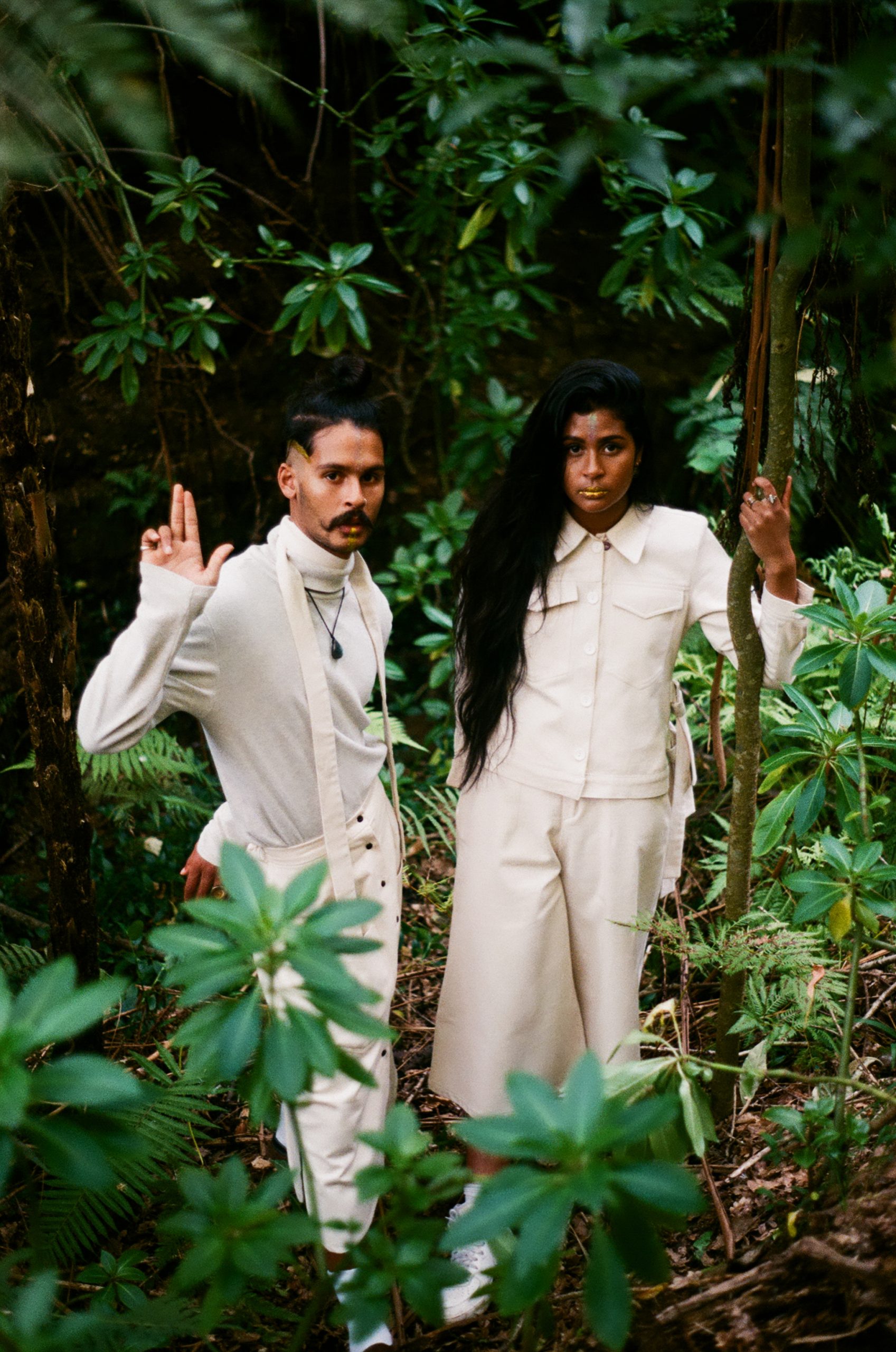Anaka is a creative with a magnetic portfolio and project repertoire to her name. The visual impression of her work is one of sublime distinctiveness. In her photographic world, off-centeredness reigns, non-traditional cropping (such as the metaphorical decapitating of heads) takes prevalence, and where there seems to be a thought given to the rule of thirds – the edges of the images bleed – a clear and intentional stylistic choice.
Other defining factors to Anaka’s photographic work are the layering of imagery as well as the selection of models that draw on one another, strengthening each image that make up her selections. Her portfolio currently features work for Refinery 29, Ossé, Tony Gum, images of Cape Town based photographer and creative director Imraan Christian as well as images of musician Luca Williams, to name a few.

Describing herself, Anaka states on her website that “I channel through the mediums of analogue and digital photography, film direction & editing; choreography and movement meditation; collage; & archival documentation in order to contribute to the healing energies that creation brings into this realm.”
Identifying as a healer first, she expresses that she is a dancer second and a visual artist third. Utilizing her creative virtues in order to sustain the way in which Spirit lives within the creative process. With a multitude of clients and impressive likenesses captured by her lens, Anaka continues her message of healing in other ways with projects such as the ‘Silient Zine’ – a physical and online archive of artists and their creations within a specific moment intended towards healing.

Looking at Spirit and healing energies it is easy to mentally create an image of Anaka practicing meditational movement – and she does – for not only personal healing but for communal healing. A dancing child grew into the healer, dancer and artist Anaka is at present. Movement is an integral part of her being. It is a source of positive energy that she pours out onto the world, into her art and into her vision.
Anaka’s portraits of artists such as Luca Williams and Imraan Christian indicate another interest – to archive African artists and artists working within the African Diaspora. An act that reminds me of an argument made by Susan Sontag in ‘On Photography’ where she proclaims that photographing anyone makes them important and lends celebrity status onto them. She contests that every person photographed is as important as any other person photographed regardless of their social standing – to photograph someone is to monumentalize them (Sontag 1977:31).
 Anaka wishes to highlight the importance of these individuals and their creative pursuits which is accomplished by the mere fact that she created an object from their likeness (a photograph sometimes altered by intervention into a collage). This has a deeper purpose however; the archival material hopes to decolonise the meaning of being an artist within a societal system of violence and oppression against people of colour.
Anaka wishes to highlight the importance of these individuals and their creative pursuits which is accomplished by the mere fact that she created an object from their likeness (a photograph sometimes altered by intervention into a collage). This has a deeper purpose however; the archival material hopes to decolonise the meaning of being an artist within a societal system of violence and oppression against people of colour.
As her website states “Imagery is infinite” and outlives human mortality. Imagery created by her and her collaborators are put under the ‘Imagery is Infinite™ Ar(t)chives’ title and serves to hold physical and digital space in the world. This also promotes the idea of creating consciously. The title acts as a means to “document how artists are creating now in the face of colonization”.

Anaka’s work can thus be regarded as a practice of inner healing as well as a broader healing practice towards the community she situates herself within. Her positive energy oozes from her intervention with already documented imagery as well as the power of her future and current vision is of evident prevalence.





